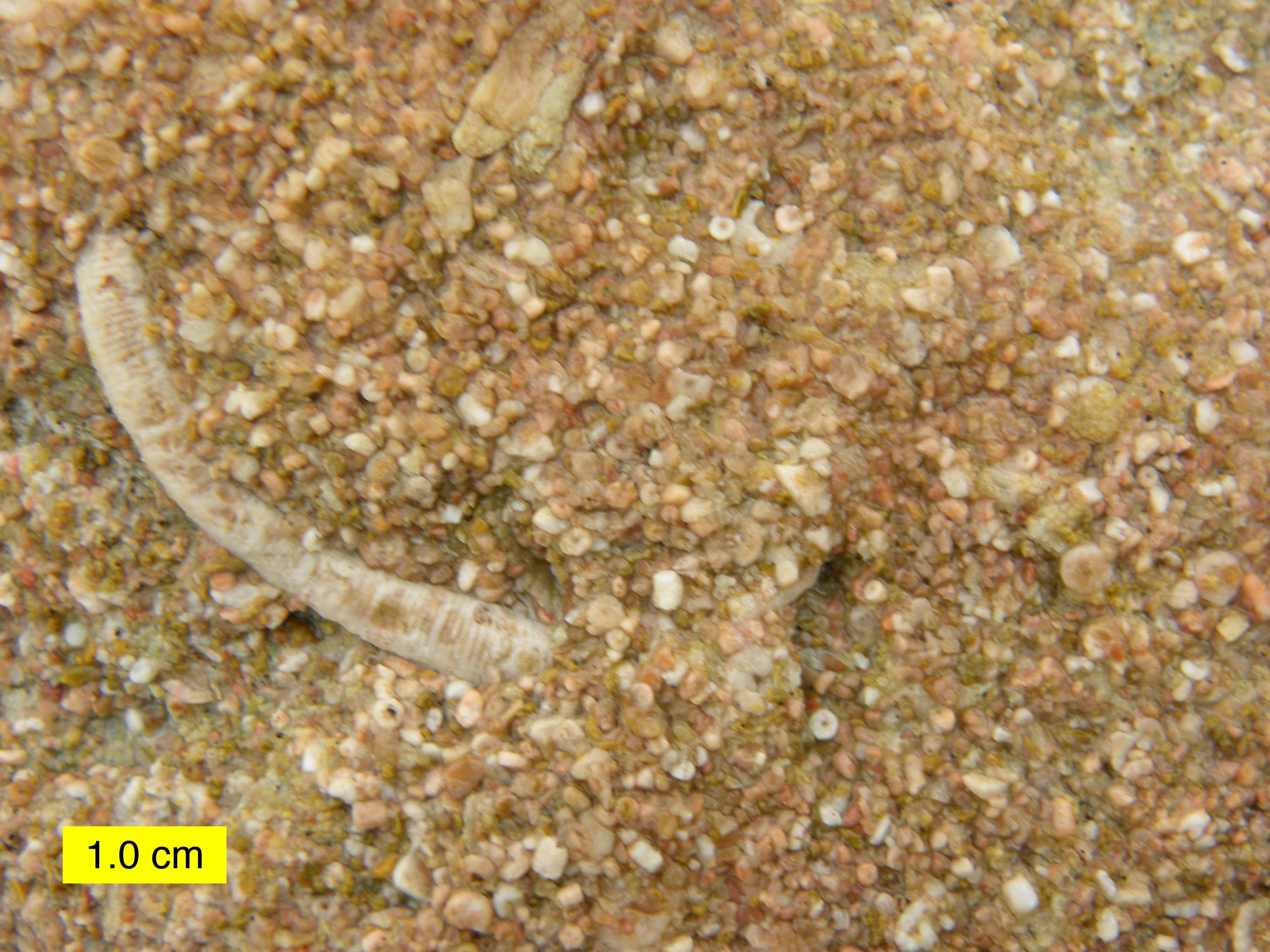|
Bafflestone
Bafflestone is a type of carbonate rock. The Dunham Classification (Dunham, 1962) of limestones employed the term boundstone to encompass all carbonate rocks that exhibited any evidence of the original components being organically-bound together at the time of deposition. Embry & Klovan (1971Embry, A.F. and Klovan, J.E. (1971) A Late Devonian reef tract on Northeastern Banks Island, NWT. Bull. Can. Pet. Geol., 19, 730–781.) proposed the sub-division of the boundstone classification in order to reflect the different mechanisms of binding within these autochthonous carbonate sediments. The classification ''bafflestone'' was proposed to describe sediments that formed where organic baffling resulted in a reduction in flow and a consequent deposition of suspended material. However, even at the time of introducing the new classification, Embry & Klovan (1971), noted that the class ''bafflestone'' was highly-interpretive and, the mechanism of formation was difficult to prove requiri ... [...More Info...] [...Related Items...] OR: [Wikipedia] [Google] [Baidu] |
Carbonate Rock
Carbonate rocks are a class of sedimentary rocks composed primarily of carbonate minerals. The two major types are limestone, which is composed of calcite or aragonite (different crystal forms of CaCO3), and dolomite rock (also known as dolostone), which is composed of mineral dolomite (CaMg(CO3)2). Calcite can be either dissolved by groundwater or precipitated by groundwater, depending on several factors including the water temperature, pH, and dissolved ion concentrations. Calcite exhibits an unusual characteristic called retrograde solubility in which it becomes less soluble in water as the temperature increases. When conditions are right for precipitation, calcite forms mineral coatings that cement the existing rock grains together or it can fill fractures. Karst topography and caves develop in carbonate rocks because of their solubility in dilute acidic groundwater. Cooling groundwater or mixing of different groundwaters will also create conditions suitable for cave ... [...More Info...] [...Related Items...] OR: [Wikipedia] [Google] [Baidu] |
Dunham Classification
The Dunham classification system for carbonate sedimentary rocks was originally devised by Robert J. Dunham in 1962, and subsequently modified by Embry and Klovan in 1971 to include coarse-grained limestones and sediments that had been organically bound at the time of deposition. The ''modified Dunham Classification'' has subsequently become the most widely employed system for the classification of carbonate sedimentary rocks with 89% of workers currently adopting this system over the alternative Folk classification scheme History Original classification Robert J. Dunham published his classification system for limestone in 1962. The original Dunham classification system was developed in order to provide convenient depositional-texture based class names that focus attention on the textural properties that are most significant for interpreting the depositional environment of the rocks. The three criteria used to define the original Dunham classes were: * the supporting fabric of ... [...More Info...] [...Related Items...] OR: [Wikipedia] [Google] [Baidu] |
Limestone
Limestone ( calcium carbonate ) is a type of carbonate sedimentary rock which is the main source of the material lime. It is composed mostly of the minerals calcite and aragonite, which are different crystal forms of . Limestone forms when these minerals precipitate out of water containing dissolved calcium. This can take place through both biological and nonbiological processes, though biological processes, such as the accumulation of corals and shells in the sea, have likely been more important for the last 540 million years. Limestone often contains fossils which provide scientists with information on ancient environments and on the evolution of life. About 20% to 25% of sedimentary rock is carbonate rock, and most of this is limestone. The remaining carbonate rock is mostly dolomite, a closely related rock, which contains a high percentage of the mineral dolomite, . ''Magnesian limestone'' is an obsolete and poorly-defined term used variously for dolomite, for lime ... [...More Info...] [...Related Items...] OR: [Wikipedia] [Google] [Baidu] |
Boundstone (rock)
A boundstone is a special type of carbonate rock in the Dunham classification Description In the original classification by Dunham(1962), boundstones are defined as "carbonate rocks showing signs of being bound during deposition .. The signs of binding are specific and occur within the sample being classified" In the modified Dunham classification by Embry and Klovan(1971), Boundstones in the sense of Dunham are subdivided into Bafflestones, Bindstones and Framestones. The term Boundstone "is retained for authochthonous limestones in which the specific mode of organic binding cannot be recognized" Lokier and Al Nunaibi(2016) define Boundstone as "an autochthonous carbonate-dominated rock in which there is any form of evidence that the original components were organically bound at the time of deposition; however, the mode of binding is not identifiable." In contrast to Embry and Klovan, they do not subdivide Boundstones into smaller classes. References {{Ci ... [...More Info...] [...Related Items...] OR: [Wikipedia] [Google] [Baidu] |
Framestone
A framestone is a special type of carbonate rock in the Dunham classification. Description The term "framestone" was not used in the original Dunham classification by Dunham (1962). It first appeared in the modified Dunham classification by Embry and Klovan (1971) where it is described as an autochthonous limestone having "in situ massive fossils which constructed a rigid three-dimensional framework during deposition. The in situ fossils therefore form the supporting framework of the rock, with matrix material occurring in the interstices between the fossils." Lokier and Al Junaibi(2016) define a framestone as "an autochthonous carbonate-dominated rock supported by a rigid organic framework developed at the time of deposition." Interpretive problems One possible problem in the interpretation of framestones is that the framework can be of different sizes from millimeters to meters, so they might not be present on the thin section. Some organisms can also be binding and build ... [...More Info...] [...Related Items...] OR: [Wikipedia] [Google] [Baidu] |



